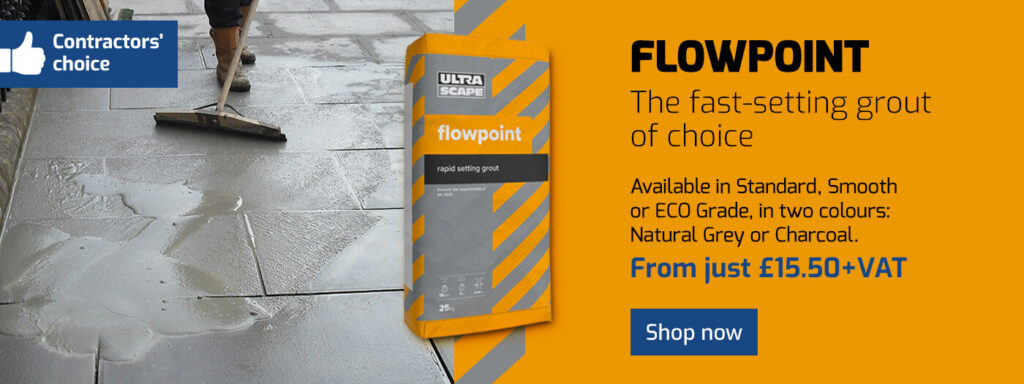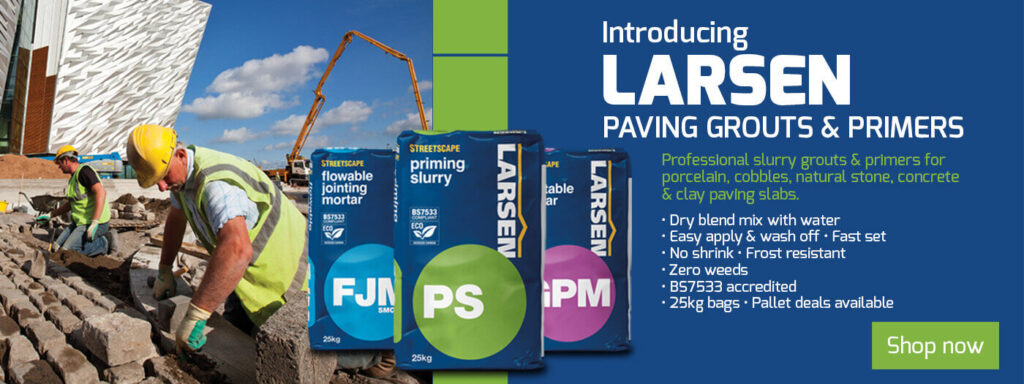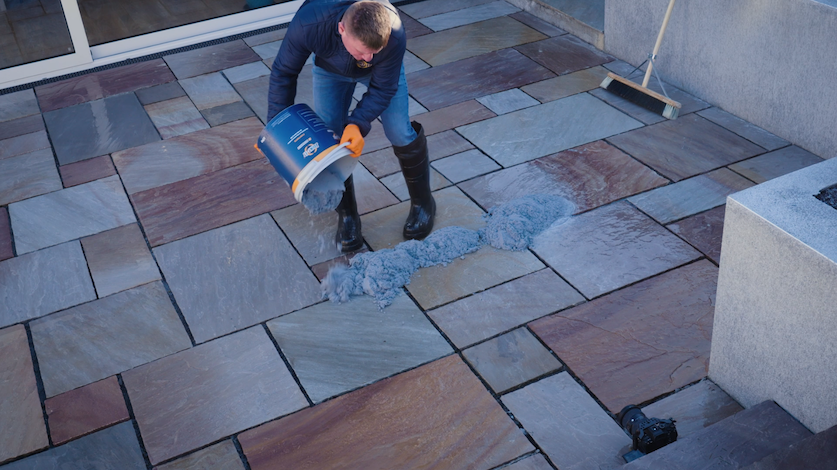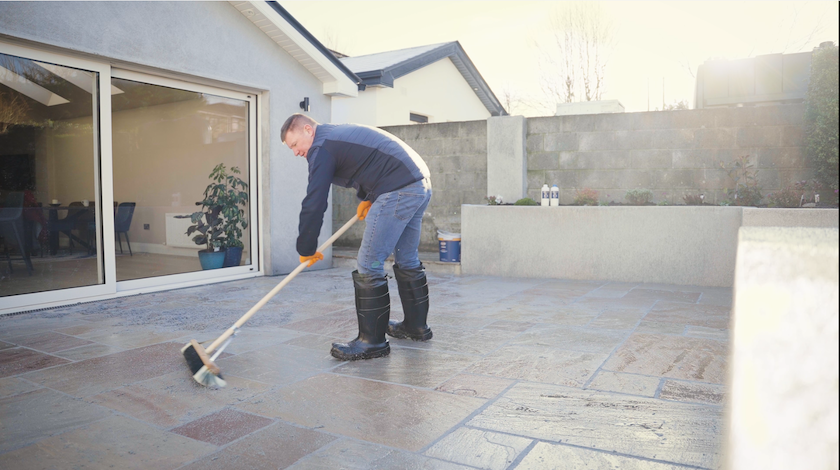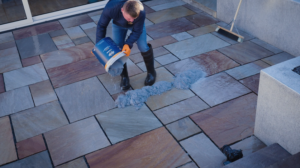Keep patio installations going over winter with our essential weather-based tips on when’s a good time to grout. Find out all in our guide to using slurry grouts during cold weather.
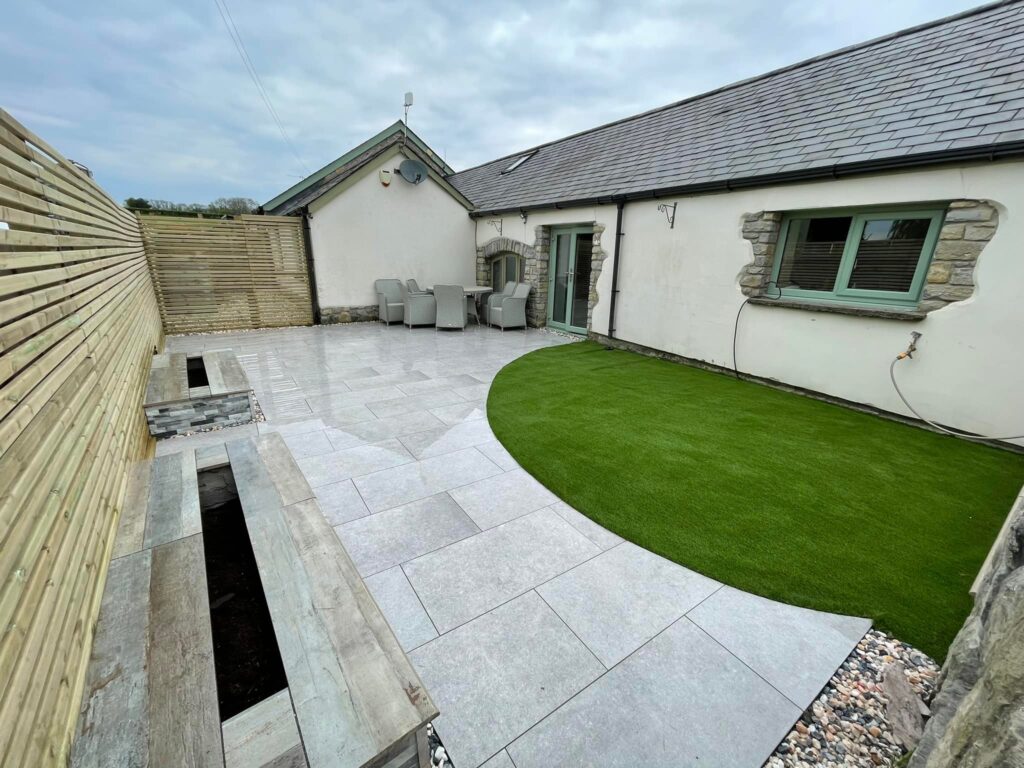
How do you apply grout during cold weather?
Loved for their strength and ease of application (and with minimal back strain!), flowable cement-based slurry grouts do take longer to cure during cold weather.
With this in mind, there are a few important pieces of advice on when you can use cementitious formulas, the best types of products for cold weather slurry grouting, plus tactics to ensure your patio installations can continue for as long as possible.
During cold weather, you must first and foremost be aware of the grout’s minimum usage temperatures.
Normally for cement-based products the absolute minimum is 5ºC and rising. But there are some slurry grouts that can still be applied during colder temperatures than that. We’ll cover those in detail in a moment.
It’s important to also be aware of setting times during cold weather. A cement-based grout will set much longer if the temperature is 5ºC than if it is 20ºC.
We recommend choosing a quality rapid-setting cement-based slurry grout.
Keep reading for the essential things to consider during winter, practical things your team can do to best work-around cold spells, and the recommended products to use during this chillier time of year.
Things to consider when grouting over winter
First up, let’s cover the basics for slurry grouting during cold weather:
#1 – Never grout if the ground is frozen
You can seriously compromise your formula if you grout when the ground is frozen.
If a client is being impatient to get the job done fast and the ground is showing even the slightest bit of frost, you must warn them against it. When the ground thaws, water is naturally released and this will compromise the quality of the mortar and how long it lasts.
Grouting when the ground is frozen can even increase the risk of efflorescence and stains, which will develop when the warmer weather of springtime finally arrives.
More on efflorescence – and how to avoid it – a little later.
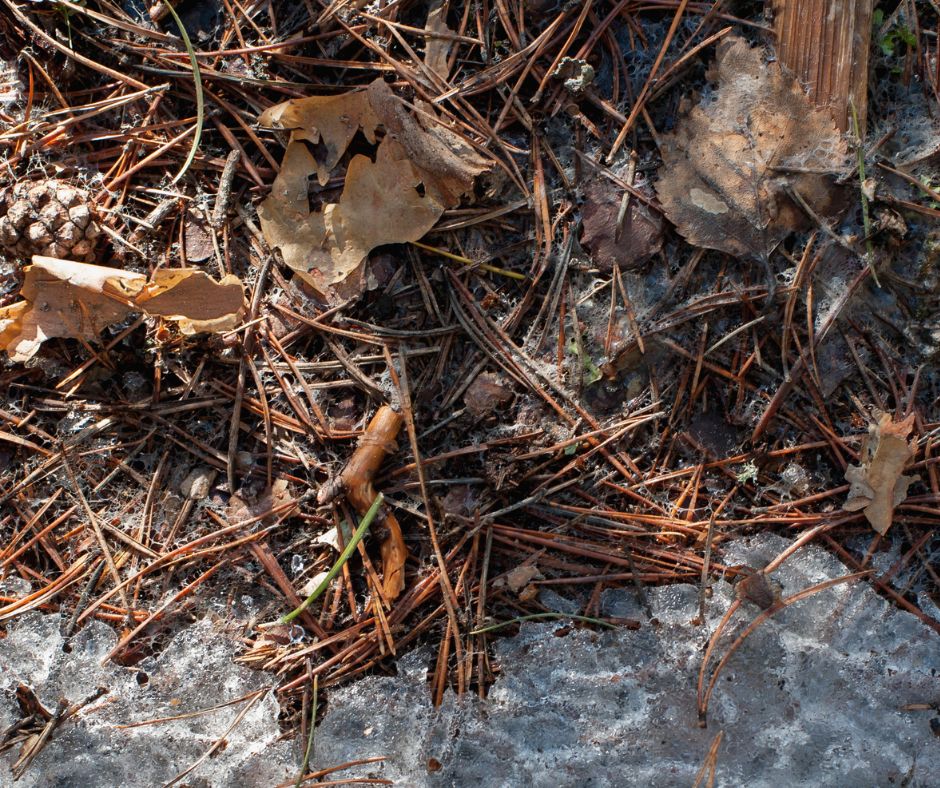
#2 – Ensure the grout has set before clean-off
When using a slurry grout, you must ensure the product has properly set in the joints before washing it off.
During winter, jointing compound will take longer to set than you’re used to. Hold your nerve and don’t wash it off too early to avoid overwatering the formula.
If you wash-off and the product hasn’t set, you’ll ovewater the mortar and risk causing issues with efflorescence further down the track.
With most slurry grouts you can easily test whether the formula has properly set.
Here are two of the most common methods:
Does your thumb leave an imprint?
Lightly touch the jointing compound with the pad of your thumb. If you leave an imprint behind, then the grout has not yet cured. No imprint and you’re ready to go with the wash-off phase.
Is the product still bleeding from the joints?
This is the easiest way to see whether slurry grouts such as Flowpoint have properly cured. If the product is still ‘bleeding’ from the joints then it still hasn’t quite set.
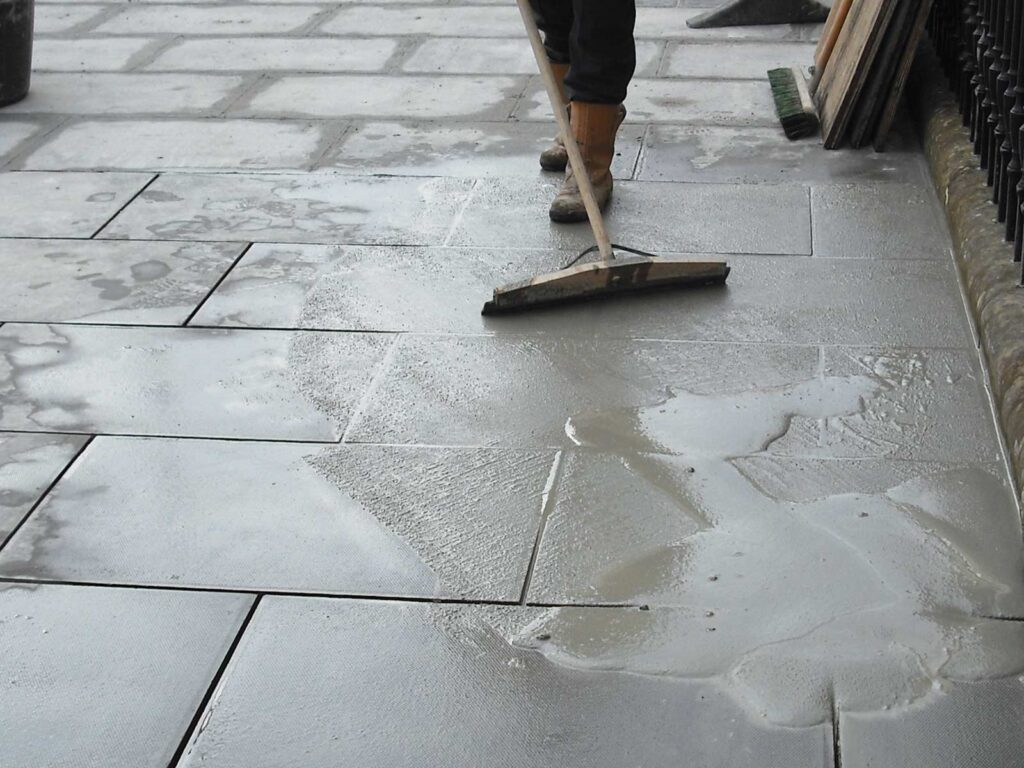
#3 – Check the manufacturer’s minimum temperature
As touched on earlier, always be aware of the manufacturer’s minimum usage temperature for any grouts or mortars you use.
Most cement-based grouts can be mixed and applied during outdoor temperatures as low as 5ºC. Although there are some that can be used at 1ºC, as long as the temperature is increasing rather than falling. Read on to find out which popular grout this is.
If unsure, always check the manufacturer’s instructions before making a hasty decision. And keep your eye on your favourite weather app!
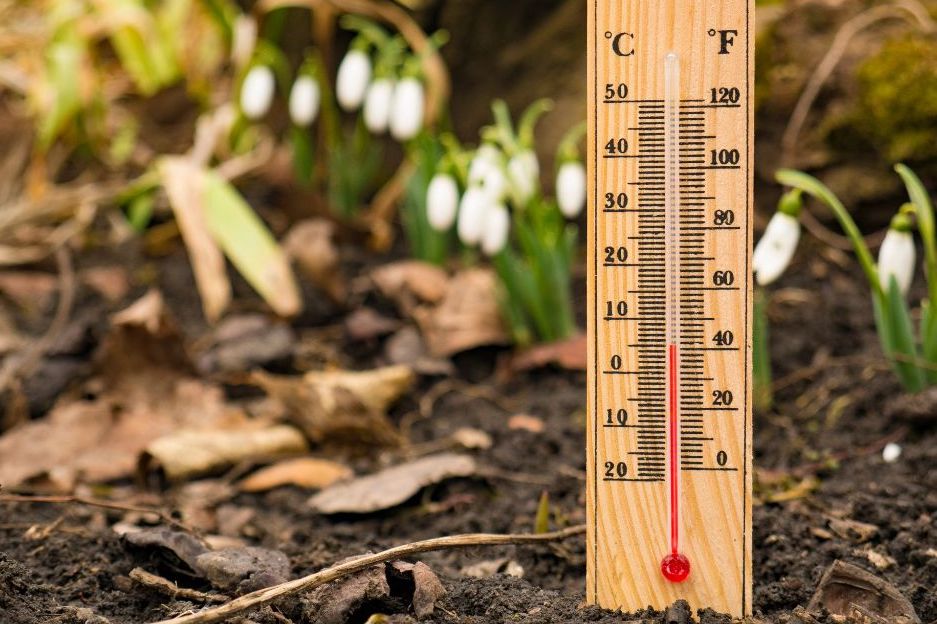
#4 – Start jobs later in the day
If the weather is set to be a cold one and below the recommended usage temperature for your products, move operations to later in the day when it’s likely to be warmer.
Remember, the important things to ensure are that the ground is free of frost and the temperature is rising, not falling.
Quick tips for using slurry grouts
Before we get onto the best slurry grouts to use during winter, read these quick tips for making sure you get the most out them at this colder time of year:
- Store your grout indoors away from any drafts, damp, frost and cold. Elevated on a pallet and off a cold, damp ground is recommended.
- Ensure the ground you are working on is free of frost.
- Ensure the outdoor temperature is the minimum recommended (usually 5ºC and rising).
- Opt for a fast-setting grout for shorter curing times (read on for the recommended products).
- When mixing, consider adding luke-warm water (around 20–25ºC) rather than cold water as it will speed-up curing times. Never use hot water.
- When storing paving slabs, keep them covered to protect them from damp, frost and moisture.
Most jointing compounds on the market are tested for their workability and setting times at a standard temperature of 20ºC.
So whatever curing times you read on the label or in the technical datasheet, estimate a longer period when the temperature is in single digits. If unsure, the datasheet should state which temperature the products were tested at.
Remember, the important things to ensure are that the ground is free of frost and the temperature is rising, not falling.
Best slurry grouts for winter
These cementitious slurry grouts will not only keep your winter operations smart, they’ll also surpise you with the strength and quality of their tried and tested formulas.
Flowpoint Rapid-Setting Grout
Ultrascape’s Flowpoint is a great option during winter as it boasts one of the fastest curing times around.
Formulated to meet and exceed the British Standard BS 7533, Flowpoint can be used with all types of paving slabs and can even offer a construction life of up to 40 years!
The recommended minimum temperature for applying Flowpoint is 5ºC and rising. However some landscapers have reported being able to still use the grout with no problems at 2ºC and rising.
At 20ºC the workability of Flowpoint is 5–15 minutes and the setting time 30 minutes. Allow much longer for this process during cold weather. When the temperature is at the absolute minimum, consider speeding up the curing time by adding luke-warm water to the mix instead of cold (but never hot!).
Normally with Flowpoint, the area can receive light foot traffic after 1 hour and vehicle traffic after 4 hours. Allow much longer during colder temperatures to ensure the product has thoroughly cured.
Choose from Standard, Eco, Smooth and Fine variations of Flowpoint in a choice of colours.
Pallet and part-pallet deals on Flowpoint, along with many other types of grouts, are available with The Paving Experts.
Larsen FJM
Another rapid-setting slurry grout that is BS 7533 accredited is Larsen’s Flowable Jointing Mortar (FJM).
Part of the Streetscape range, this high-quality jointing compound is also available with smaller aggregate as Smooth FJM grout, and both come in four colours.
When it comes to minimum useage temperatures, Larsen wins hands down.
If the temperature is falling, the absolute minimum to mix and apply the slurry grout is 3ºC.
However, if the temperature is rising on a thermometer, the technical datasheet states you can apply the grout at 1ºC. That certainly gives you some extra opportunity to continue operating on colder days.
Larsen FJM also contains cement and so extra care is needed during cold weather. The product’s workability at 20ºC is approximately 30 minutes. Allow longer during colder temps.
As with all slurry grouts, the ground must not be frozen when applying FJM grout.
The area can withstand light foot traffic after 1 hour and vehicle traffic after 4–6 hours. But do still allow longer during cooler temperatures to be on the safeside.
Save when you buy 39 bags of Larsen FJM (Standard) or Eco Smooth.
Fuga-Pave Flex CH
As a cement-hybrid grout (hence the CH in the name), Fuga-Pave Flex CH is a ground-breaking outdoor grout that can also be used for indoor floor installations.
Containing a combination of resin and cement, Fuga-Pave is the perfect choice for grouting ceramic and porcelain tiles, mosaics, natural stone and concrete products.
Easy to apply, its performance characteristics include water-repellance, a very low water-absorption rate, high surface hardness, total colour uniformity and a high resistance to the most common acidic substances. The manufacturer also claims it creates ‘zero efflorescence’.
Fuga-Pave cement-based grout can be used during outdoor temperatures of a minimum of 5ºC and rising. At this temperature, the area will be ready to receive foot traffic within 10 hours (2 hours if the temp was 35ºC).
Fuga-Pave is available in a choice of five UV-resistant colours, either in a 20kg bag or 5kg bucket.
Save when you buy a patio bundle of Fuga-Pave grout together with bedding mortar and primer.
How to avoid efflorescence during cold weather
Although efflorescence does not develop during winter itself, washing off the slurry too early or adding too much water to the area can create the conditions for these pesky types of stains to develop. But you won’t know about it until you get the dreaded call from the client at springtime.
Efflorescence commonly develops on granite flags and porous sandstones when the weather warms up. The stains can be highly visible and are caused by a complex process that happens when moisture, together with minerals and salts, migrate up through porous paving stones to the surfaces above.
Eliminating efflorescence once it has developed can be difficult. Instead there are a few key things you can do to help avoid efflorescence from developing on your patio installations in the first place:
- Lay a full-contact mortar bed, ensuring every slab is in full contact with the mortar below.
- Apply primer to the back of the slabs and all the way to the edges (use a Grabo if you’re concerned about sticky fingers!).
- When using slurry grout as your jointing compound, don’t overwater the product, ensure the grout has cured before wash-off and be mindful of the rain.
Read our guide to applying slurry grouts such as Flowpoint during the rain.
You might also be interested in our chat with Gareth Wilson, landscaping lecturer and expert witness, about the best gadgets to help avoid efflorescence.

